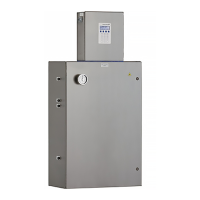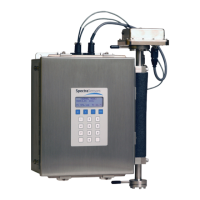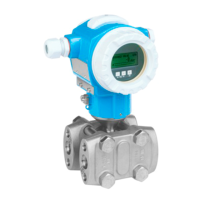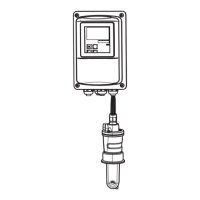Operating Instructions SS2100i-2 TDLAS Gas Analyzer
28 Endress+Hauser
Unused cable entries shall be sealed with a flameproof blanking element, which shall be fitted directly to the hole
(no threaded adapter shall be used) and shall comply with thread engagement requirements detailed above and shall
be secured against loosening.
4.10 Connecting the solenoid valves
Differential systems require solenoid valves to switch between process flow and flow that has been scrubbed of the
analyte. The solenoids switch the flow directly, as shown in Fig 17. Basic differential system with two solenoid valves,
or via instrument air driving pneumatic valves, as shown in Fig 18 through Fig 20. For more information, refer to
Differential TDLAS.
For systems performing differential measurements that do not have a factory installed sample system, the cables
connecting the solenoid valve(s) to the electronics must be installed. All work should be performed by personnel
qualified in electrical installation.
Pay special attention to systems measuring especially reactive or adherent species. Because of the reactive or
adherent nature of such species, accurate measurement of their concentration may be compromised by
adsorption, desorption, or reaction with wetted surfaces. Special coatings are available to minimize these effects.
An appropriate sample conditioning system that has been specifically designed to deliver a sample stream that is
representative of the process stream at the time of sampling should be used with the system to assure that the
analyzer is receiving sample gas that can be correctly measured.
A schematic of a typical basic differential setup for installations where no instrument air is available to drive
pneumatic valves is shown in Fig 17. A preferable setup is shown in Fig 18 where only one solenoid is required in
favor of more reliable pneumatic valves. Systems set up for auto-validation with one gas require two solenoids, as
shown in Fig 19, whereas auto-validation with two gases requires four solenoids, as shown in Fig 20.
Certified compound barrier seal glands and braided armored cables should be used where appropriate in
compliance with local regulations.
Hazardous voltage and risk of electric shock. Turn off and lock out system power before opening the electronics
enclosure and making any connections.
Be sure to use solenoid valves rated for the output voltage of the relays on your system. Failure to do so may
result in fire.
4.10.1 To connect the solenoid valves
1. Open the analyzer enclosure cover according to the procedure To open an analyzer enclosure cover to gain access
to the field interface terminal block.
2. Install an appropriate compound barrier seal type gland into the M25 access port on the bottom left of the
enclosure. Refer to Application of gland lubricant.
3. Pull the solenoid valve cables into the electronics enclosure.

